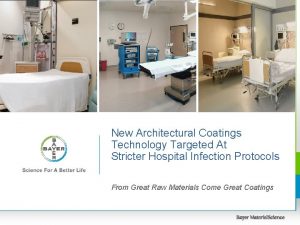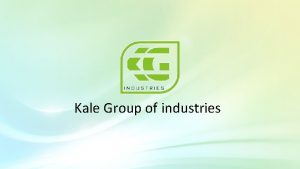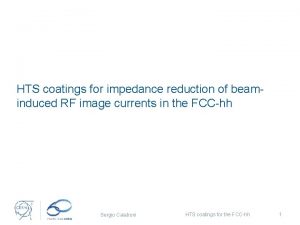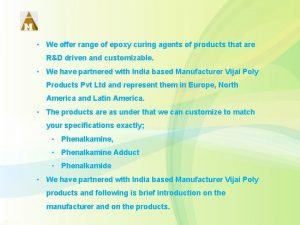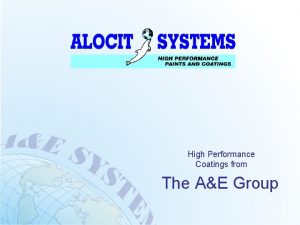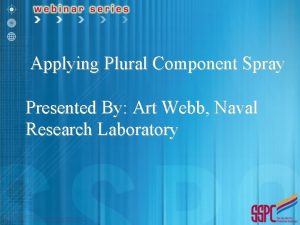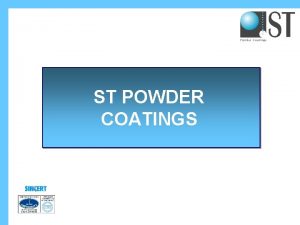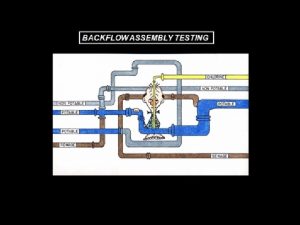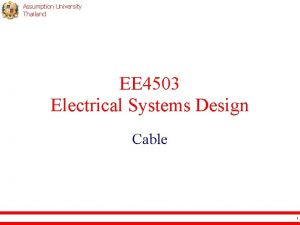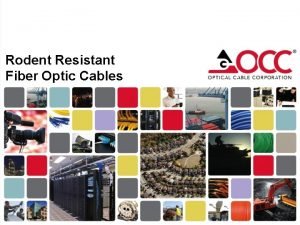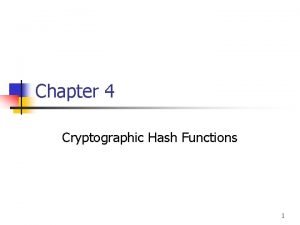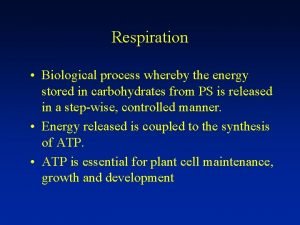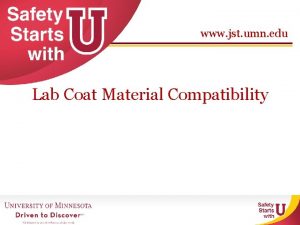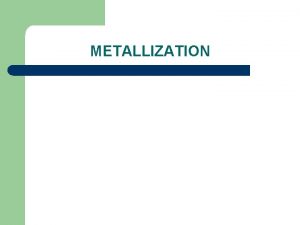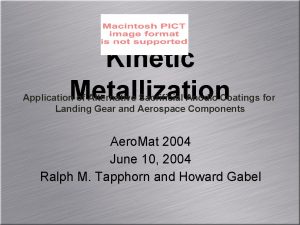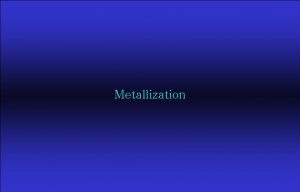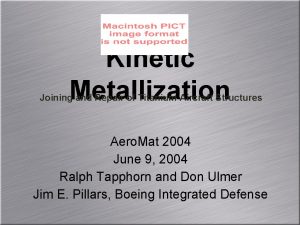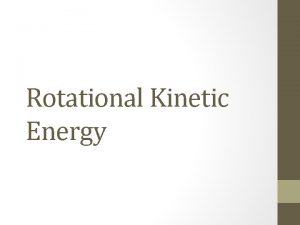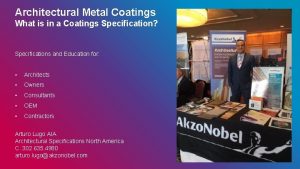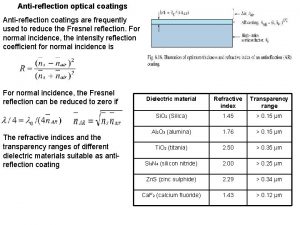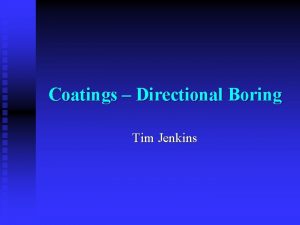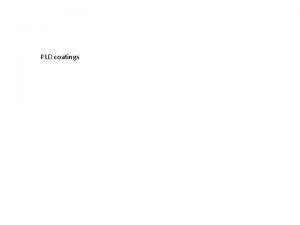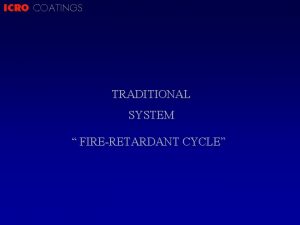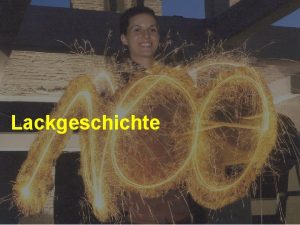Kinetic Metallization Application of OxidationCorrosion Resistant Coatings to

















- Slides: 17

Kinetic Metallization Application of Oxidation/Corrosion Resistant Coatings to Rocket Engine Combustion Chamber Liners Aero. Mat 2004 June 10, 2004 Ralph Tapphorn and Don Ulmer David Grimmett, Boeing-Rocketdyne Linus Thomas-Ogbuji, NASA-GRC

Overview Introduction to Kinetic Metallization Application Oxidation/Blanching Resistant Coatings for Combustion Chamber Liners Coating Properties Tensile Properties Thermal Conductivity Oxidation Test Results TGA Cyclic Oxidation Summary/Future Work

Kinetic Metallization Impact Consolidation Process Feed-stock: fine powder Accelerant: inert light gas Solid-state Consolidation No Bulk Melting No Liquid Chemicals Environmentally Innocuous No Particle or Hazardous Gas Emission

Process Flow Powder fluidized using pressurized He gas (PFU) Powder/gas mix thermally conditioned to improve deposition efficiency (TCU) He PFU Deposition nozzle produces highly collimated spray pattern Substrate Area coverage using X-Y rastering of nozzle and/or rotation of substrate TCU Deposition Nozzle

KM–CDS First KM-CDS Shipped!! Buyer: US Naval Academy Located: NAVSEA-Carderock Coating Development System Desk sized Production unit Same footprint Remove spray enclosure

Application MCC liner life in LOX/H 2 engine SSME Main Combustion limited by thermal ratcheting Chamber (MCC) failure initiated by cyclic oxidation/ reduction (“blanching”) of copper alloy liner Desire high conductivity coating that forms adherent, self healing oxide that is stable in H 2 Candidate coatings include Cux. Cr, where x = 20 to 30 vol. % Study initiated to select optimum composition of Cu-XCr based on mechanical properties and oxidation resistance

Advantages KM vs. Thermal Spray Eliminates: Porosity Oxygen pickup Interlayer bond coats Vacuum chamber

Coating Properties KM Cu-Cr Deposit Bulk Cu-Cr specimens machined from 10 -mm thick KM deposits Tensile Copper Substrate Thermal Conductivity • Three Cu-Cr compositions evaluated: Thermal Expansion Specimens Tensile Specimens • Cu-20 vol. %Cr • Cu-25 vol. %Cr • Cu-30 vol. %Cr Thermal Conductivity Specimens

Tensile Properties KM Cu-Cr tensile properties equivalent to wrought Strength increases (ductility decreases) with increasing Cr content Wrought KM

Fractography Ductile, microvoid coalescence observed at room temperature

Thermal Conductivity KM Cu-Cr thermal conductivity equivalent to wrought Conductivity decreases with increasing Cr content

Oxidation Behavior Evaluation of KM Cu-Cr coated GRCop-84 TGA coupons included: Coating Adhesion Static Oxidation Cyclic Oxidation KM Cu-Cr Coated GRCop 84 TGA Coupons KM Cu-25 vol. %Cr Three Cu-Cr compositions evaluated: Cu-20 vol. %Cr Cu-25 vol. %Cr Cu-30 vol. %Cr GRCop-84

Coating Adhesion Coating adhesion improved by post-deposition heat treatment Note: Arrows indicate failure in epoxy

Static Oxidation Formation of continuous Cr O layer 2 3 underneath external Cu. O slows oxidation rate Oxidation rate decreases with increasing Cr content Cu. O Cr 2 O 3 20 Cr 25 Cr Cu-Cr coating

Cyclic Oxidation Cyclic Temperature 77 ºK to 1023 ºK Best oxidation resistance Cu-Cr Coating with 25 vol% Cr Spalling observed Cu-25 vol. %Cr 25. 0 Cr Cu-20 vol. %Cr 20. 0 Cr 650ºC 750ºC

Summary Kinetic Metallization achieves high density, adherent Cu-Cr coatings Eliminates need for interlayer bond coat Eliminates oxygen pickup during spray process Best balance of oxidation protection and mechanical properties offered by Cu 25 vol. %Cr

Future Work NASA initiated new program to evaluate KM Ni. Cr. Al. Y coatings for next-generation LOX/kerosene engines Preliminary work has shown that low porosity, welladherent KM Ni. Cr. Al. Y coatings can be applied to GRCop-84 No grit blasting surface preparation required No interlayer bond coat required KM Ni. Cr. Al. Y
 Metallization
Metallization Hospital wall coatings
Hospital wall coatings Alpit metal works
Alpit metal works Hts coatings
Hts coatings St powder coatings
St powder coatings Phenalkamide
Phenalkamide Alocit
Alocit Sherwin williams chemical coatings store
Sherwin williams chemical coatings store Plural component pump
Plural component pump St powder coatings
St powder coatings Spill resistant vacuum breaker
Spill resistant vacuum breaker Fire resistant cable thai yazaki
Fire resistant cable thai yazaki Rodent resistant fiber optic cable
Rodent resistant fiber optic cable Cryptographic
Cryptographic Chapter 19 disease transmission and infection prevention
Chapter 19 disease transmission and infection prevention Nucleoside analogs
Nucleoside analogs Cyanide-resistant respiration slideshare
Cyanide-resistant respiration slideshare Flame resistant lab coat amazon
Flame resistant lab coat amazon

